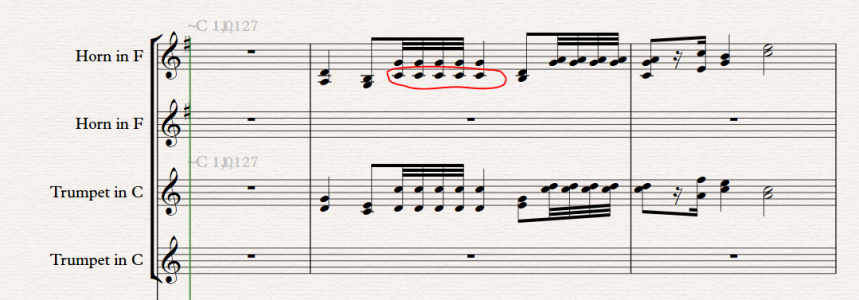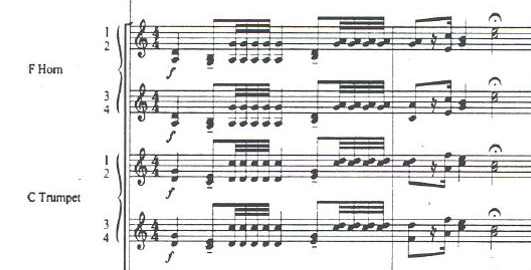I'm reading the score, and wondering how to read the harmony. It's mostly made of two-notes chords, so there is always some ambiguity in which are the chords. My guess for the first two bars is:
G-- C-d7- d7-- e-d7- | d-- C-- F---- |
In case one wants to just-tune the notes, what should be done? Leave the topmost/melody note untouched, or consider the ghost fundamental and adapt all the notes?
Or, should a fanfare be better stay in equal tuning?
As you may guess, I know nothing about brass ensemble writing.
Paolo








